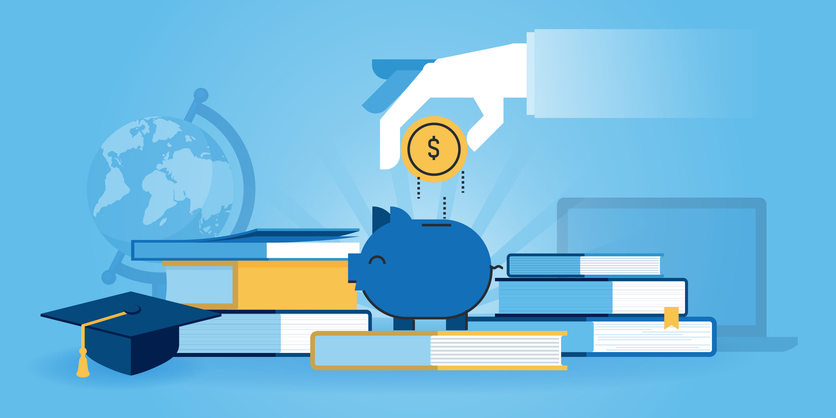Empowering Students through Goal Setting and Building Accountability
How do we empower students to take an active role in their education? Students need to feel that they are a part of cultivating their own learning experiences. As educators, we must effectively guide our students to understanding their instructional data and work with them to set achievable goals that put them on the right path towards academic success.
What is Student Empowerment?
Student Empowerment is defined by IGI Global as the process by which students obtain the ability to self-direct and act on their own freedom of choice and decision-making in an academic setting. Student empowerment in the classroom is illustrated through the ability of an instructor to enable a student to learn, teach, and lead others through gaining a sense of power. Or encouraging students to take ownership in achieving their goals.
Teachers can practice implementing student empowerment by setting up individual meetings with students where they show them their instructional data, and explain what it means and how to target their needs with specific practice. They can then show students how to set measurable and attainable goals in order to give them ownership over their own learning and reach academic grade level mastery through achieving them.
Empowering students is a critical piece of the role of the teacher. The way we think about the role of the teacher has changed over time, moving from what was once believed to be the holder of the information to fill the minds of students to what is now more of a guide or facilitator of a student’s individual learning experience. Especially in the digital age in which students have access to information at their fingertips, it is important to rethink the idea of how teachers and students interact. Teaching from a textbook and having students regurgitate information is no longer the standard. Instead, we need to consider the fact that students are bombarded with information and empower them to learn to disseminate information, think critically, and take charge of their own learning.
Once students feel a sense of ownership and autonomy over their educational experience and understand how to set and achieve their own learning goals, they are more likely to succeed and reach mastery. This is because they are able to find motivation in working towards a goal and making progress on that goal. The understanding that they are working towards something and the feeling of accomplishment they receive, keeps them motivated and engaged in the learning process.
How to Effectively Set Goals with Students
One of the most important aspects of goal setting is to make sure that students are guided to set measurable and attainable goals. Setting a goal without also setting up a system for progress monitoring and accountability is not enough to be successful.
The SMART Goal is a commonly used method for setting goals that prepare students for success. The SMART acronym stands for specific, measurable, attainable, relevant and time-bound.
A goal that is SMART is:
Specific: Define the goal in detail and find your purpose for the goal.
Measurable: How will success be measured? Set concrete criteria for measuring progress.
Attainable: Can you accomplish the goal? It should be challenging yet realistic.
Relevant: Is the goal constructive? It needs to be results focused and productive.
Time-Bound: It should have a set deadline and regular check points.
Setting a SMART goal with students can help to ensure that they have a system in place towards measuring and meeting their goal. The APA has found that frequently monitoring progress towards a goal helps increase the chances of success. Writing down the goal and sharing it with others are key indicators of success.
Setting goals with students and also scheduling time to regularly review those goals and make necessary adjustments is a great way to empower students to take an active role in their learning journey. Establishing a check-in system for students either with their peers, parent, teacher, or coach is a very important part of setting effective goals for students.
Tools for Empowering Students and Building Accountability
It is clear that empowering students through goal setting and building accountability is a key to student success. This is easy to dictate, but teachers need real tools to provide students with the data they need to set and achieve their goals.
One of the important pieces of this strategy is in providing students and teachers with individual data on students’ strengths and weaknesses so that they can adequately address the findings and set appropriate goals. Quality instructional data from diagnostics, assessments, and assignments prepares students to be able to see exactly where they need to be focused.
Progress Learning provides a number of tools to assist teachers with empowering students and setting attainable goals based on real, quality data. K-5 students are encouraged to achieve academic progress through earning galaxy stars and unlocking fun and engaging features. 6-12th grade students are provided a study plan with a dot rank for each standard to show them exactly where they are and what they are working towards. They can also easily view their graded work and see their growth through our detailed reports. We have our own goal setting templates which work with the platform to help students and teachers track progress. Teachers can also offer targeted intervention and remediation through the use of our Quick Click Remediation tool for any assessment. It is our goal that teachers are given the tools they need to empower their students and provide them with the personalized learning experiences they need to achieve their goals and succeed.
Interested in learning more about how Progress Learning can support student empowerment? Request a Demo with us.
Join us to learn more about our commitment to creating standards-aligned content in every state by attending our upcoming webinar: Behind the Scenes at Progress Learning: Bringing Standards to Life


